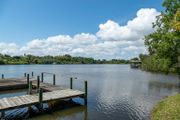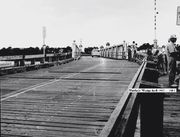View table: timeline
Table structure:
- Name - String
- Date - Date
- Region - String
- Water - String
- Description - Wikitext
- Article - Page
- Source - String
- SourceURL - URL
- Image - File
- Poster - String
- Posted - String
This table has 19 rows altogether.
| Page | Name | Date | Region | Water | Description | Article | Source | SourceURL | Image | Poster | Posted |
|---|---|---|---|---|---|---|---|---|---|---|---|
| History:Brevard Save Our Indian River Lagoon Ordinance 2016-11-08 | Brevard Save Our Indian River Lagoon Ordinance | November 8, 2016 | Brevard County | Estuary | Brevard County voters approved a half cent sales tax collected for 10 years, to restore the Indian River Lagoon through financing, planning, constructing, maintaining, and operating capital improvements and maintenance projects, and fund programs designed to improve water quality, fish, wildlife and marine habitat, and to remove muck and reduce pollution. |
Save Our Indian River Lagoon | Save Our Indian River Lagoon ½ Cent Sales Tax Referendum | Admin | 20191230162722 | ||
| History:C-1 Canal Flow Reversed 2017-05-11 | C-1 Canal Flow Reversed | May 11, 2017 | Brevard County | Indian River | This project diverted canal flows from the 100-square-mile Melbourne-Tillman Water Control District away from Turkey Creek and the Indian River lagoon, returning up to 43 percent of the drainage district’s discharges to the Upper St. Johns River Basin. |
St. Johns River Water Management District | Admin | 20191224150456 | |||
| History:Canaveral National Seashore Established 1975-01-03 | Canaveral National Seashore Established | January 3, 1975 | Brevard County | Atlantic | Canaveral National Seashore was created through congressional legislation on January 3, 1975 (by Public Law 93-626) to preserve and protect the natural, scenic, scientific, ecological, archeological, and historical values and resources within the national seashore, and to provide for public outdoor recreational use and enjoyment of those resources. The national seashore contains 24 miles of pristine, undeveloped beach along the Atlantic coast and Mosquito Lagoon. |
U.S. National Park Service | Admin | 20191224112432 | |||
| History:Cliff Creek Baffle Box Installation Completed 2020-06-10 | Cliff Creek Baffle Box Installation Completed | June 10, 2020 | Brevard County | Indian River | Construction of the Cliff Creek Baffle Box in Melbourne, Florida was completed on June 1, 2020. It is the largest nutrient-separating baffle box east of the Mississippi River. |
City of Melbourne Press Release | Admin | 20201102190400 | |||
| History:Crane Creek Project 2018-12-14 | Crane Creek Project | December 14, 2018 | Brevard County | Central Indian River | The Crane Creek M-1 Canal Restoration Project will reduce the flow of nutrients and sediments to the lagoon by returning to the St. Johns River billions of gallons of freshwater flow each year. Major project components include an operable weir located near the natural coastal ridge, a stormwater pump station and a stormwater treatment area to ensure that nutrients and sediments are removed prior to the water’s return to the St. Johns River. |
Crane Creek M-1 Canal Flow Project | Admin | 20201207125008 | |||
| History:Eau Gallie River Dredged 2019-05-13 | Eau Gallie River Dredged | May 13, 2019 | Brevard County | Indian River | The district, Florida Department of Environmental Protection, state and local elected officials, and Indian River Lagoon protection advocates gathered to celebrate the completion of a two-year-long muck dredging project in the Eau Gallie River aimed at improving water quality. Attendees gathered at historic Ballard Park at the mouth of the Eau Gallie River to celebrate the removal of approximately 630,000 cubic yards of black muck from the waterway, which is a tributary of the Indian River Lagoon. The removal of such a significant amount of muck translates to the reduction of approximately 1,200 tons of nitrogen and 260 tons of total phosphorous, nutrients that contribute to algal blooms in waterways. |
St. Johns River Water Management District | Admin | 20191224145709 | |||
| History:First Florida Audubon Society Meeting 1900-03-02 | First Florida Audubon Society Meeting | March 2, 1900 | Florida | Estuary | On March 2, 1900 the first meeting of the Florida Audubon Society was held in Maitland at the L.F. Dommerich estate. The list of early officers' included: N.Y. Governor and later U.S. President Theodore Roosevelt, Florida Governor W.D. Bloxham, American Museum of Natural History's Frank Chapman, Rollins College President G.M. Ward, Stetson University President J.F. Forbes, and the editors of the state's largest newspapers. A little later, the list grew to include President Grover Cleveland, Florida Governor W.S. Jennings, ornithologist Theodore S. Palmer, and Maria R. Audubon. Working together, the state Audubon Societies successfully push for the passage of the Lacey Act, prohibiting the interstate trade of wildlife killed in violation of state laws. A regular winter visitor to Florida, Frank Chapman, ornithologist and curator of the American Museum of Natural History, organizes the first Christmas Bird Count. |
Florida Audubon Society | Admin | 20191224111106 | |||
| History:Florida Marine Net Fishing Amendment 3 1994-11-08 | Florida Marine Net Fishing Amendment 3 | November 8, 1994 | Florida | Estuary | The Florida "Net Ban" limits the use of nets for catching saltwater finfish, shellfish, or other marine animals by prohibiting the use of gill and other entangling nets in all Florida waters, and prohibiting the use of other nets larger than 500 square feet in mesh area in nearshore and inshore Florida waters. Provides definitions, administrative and criminal penalties, and exceptions for scientific and governmental purposes |
ballotpedia: Florida Marine Net Amendment 3 | Admin | 20191230161449 | |||
| History:Florida Surface Water Improvement and Management Act 1987-12-07 | Florida Surface Water Improvement and Management Act | December 7, 1987 | Florida | The Florida Legislature enacted the Surface Water Improvement and Management Act (SWIM) (FL Chapter 62-43) to protect, restore and maintain Florida's highly threatened surface water bodies. Under this act, the state's five water management districts identified a list of priority water bodies within their authority and implement plans to improve them. The St. Johns River Water Management District recognized the Indian River as an area in need of special protection and restoration. The SWIM act was repealed on February 28, 2012. |
Florida Administrative Code | Admin | 20191224134901 | ||||
| History:IRLNEP Established 1991-01-01 | IRLNEP Established | January 1, 1991 | Florida East Coast | Estuary | The Indian River Lagoon was nominated for inclusion in the National Estuary Program in 1990 and, following review by the U.S. Environmental Protection Agency, the Indian River Lagoon National Estuary Program (IRLNEP) was initiated in 1991. |
U.S. Environmental Protection Agency | Admin | 20191224080149 | |||
| History:Mathers Bridge Completed 1927-06-16 | Mathers Bridge Completed | June 16, 1927 | Brevard County | Banana River | On June 16, 1927, John R. Mathers completed his wooden toll bridge across the Banana River lagoon between Merritt Island and Indian Harbour Beach, Florida. The manually operated swing bridge was the first roadway connection between Merritt Island and the beach barrier island. |
Mathers Bridge Historic Engineering Record | Admin | 20201121172428 | |||
| History:Merritt Island National Wildlife Refuge Established 1963-08-28 | Merritt Island National Wildlife Refuge Established | August 28, 1963 | Brevard County | Mosquito Lagoon | On August 28, 1963, the U.S. Fish and Wildlife Service entered into an Interagency Agreement with NASA to manage all lands within the Kennedy Space Center that were not used for KSC operations as the Merritt Island National Wildlife Refuge. |
U.S. Fish and Wildlife Service | Admin | 20191224113313 | |||
| History:Pelican Island First National Wildlife Refuge 1902-03-14 | Pelican Island First National Wildlife Refuge | March 14, 1902 | Indian River County | Central Indian River | On March 14, 1902, with the encouragement of Paul Kroegel, Frank Chapman and the Florida Audubon Society, President Theodore Roosevelt established Pelican Island in the Indian River Lagoon as the first federal bird reservation, in what would become the first wildlife refuge in the National Wildlife Refuge System. |
Paul Kroegel | U.S. Fish and Wildlife Service | Admin | 20191224110510 | ||
| History:Ponce de Leon Lands in Melbourne Beach 1513-04-02 | Ponce de Leon Lands in Melbourne Beach | April 2, 1513 | Brevard County | Atlantic | Juan Ponce de Leon's first Florida landing was at Brevard County's Melbourne Beach on April 2, 1513. |
Brevard County Government | Scisco 1913 Ponce de Leon track map.png | Admin | 20201107182804 | ||
| History:Ponce de Leon Lighthouse 1887-11-01 | Ponce de Leon Lighthouse | November 1, 1887 | Volusia County | Mosquito Lagoon | Kerosene fueled Ponce de Leon Lighthouse was completed and first lit on November 1, 1887. |
Ponce de Leon Lighthouse Station | Ponce de Leon Inlet Light Station National Historic Nomination | Ponce-de-Leon-Lighthouse NathanKennPhoto.jpg | Admin | 20200904200649 | |
| History:Sebastian Inlet District Chartered 1919-05-23 | Sebastian Inlet District Chartered | May 23, 1919 | Indian River County | Central Indian River | On May 23, 1919 the Florida Legislature enacted Chapter 7976 to create the Sebastian Inlet District with a charter of maintaining the man-made navigational channel connecting the Indian River lagoon and the Atlantic Ocean. |
Sebastian Inlet District - Florida Chapter 7976 - 1919-05-23 | Sebastian Inlet Tax District | Admin | 20201116093345 | ||
| Info:Crane Creek | Crane Creek Project | December 14, 2018 | Brevard County | Central Indian River | The Crane Creek M-1 Canal Restoration Project will reduce the flow of nutrients and sediments to the lagoon by returning to the St. Johns River billions of gallons of freshwater flow each year. Major project components include an operable weir located near the natural coastal ridge, a stormwater pump station and a stormwater treatment area to ensure that nutrients and sediments are removed prior to the water’s return to the St. Johns River. |
Crane Creek M-1 Canal Flow Project | Admin | 20201207125008 | |||
| Info:Eau Gallie River | Eau Gallie River Dredged | May 13, 2019 | Brevard County | Indian River | The district, Florida Department of Environmental Protection, state and local elected officials, and Indian River Lagoon protection advocates gathered to celebrate the completion of a two-year-long muck dredging project in the Eau Gallie River aimed at improving water quality. Attendees gathered at historic Ballard Park at the mouth of the Eau Gallie River to celebrate the removal of approximately 630,000 cubic yards of black muck from the waterway, which is a tributary of the Indian River Lagoon. The removal of such a significant amount of muck translates to the reduction of approximately 1,200 tons of nitrogen and 260 tons of total phosphorous, nutrients that contribute to algal blooms in waterways. |
St. Johns River Water Management District | Admin | 20191224145709 | |||
| Sebastian Inlet | Sebastian Inlet District Chartered | May 23, 1919 | Indian River County | Central Indian River | On May 23, 1919 the Florida Legislature enacted Chapter 7976 to create the Sebastian Inlet District with a charter of maintaining the man-made navigational channel connecting the Indian River lagoon and the Atlantic Ocean. |
Sebastian Inlet District - Florida Chapter 7976 - 1919-05-23 | Sebastian Inlet Tax District | Admin | 20201116093345 |







